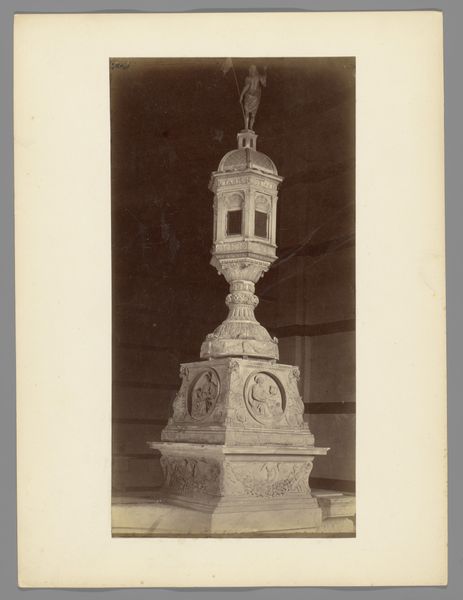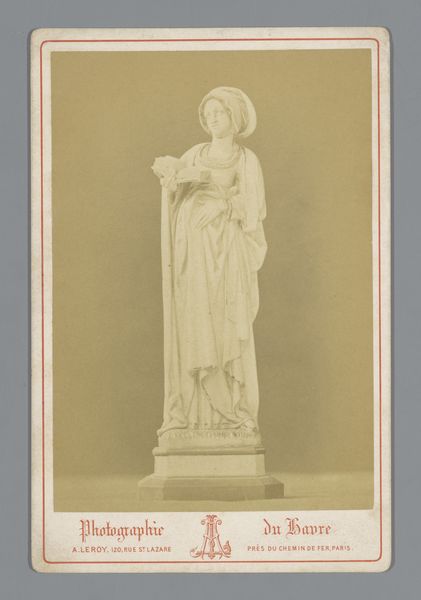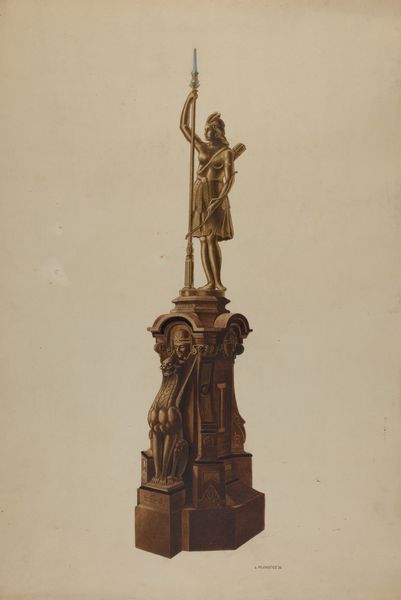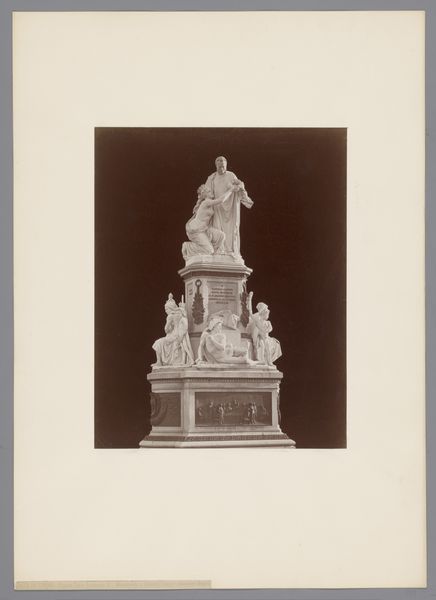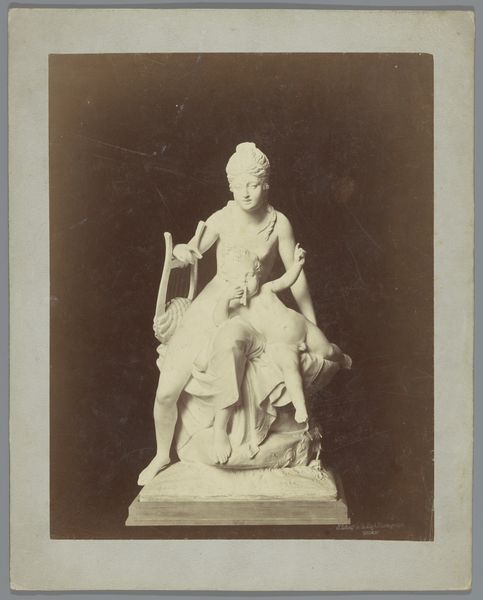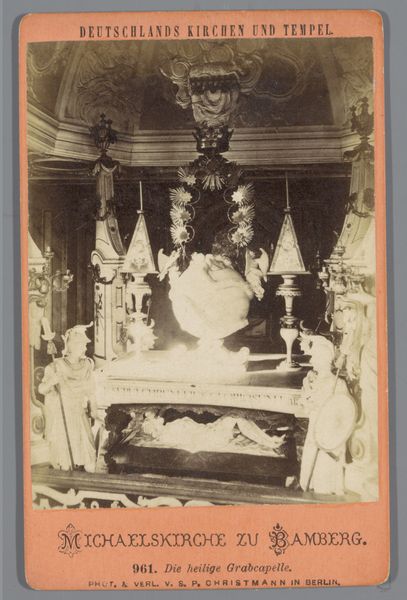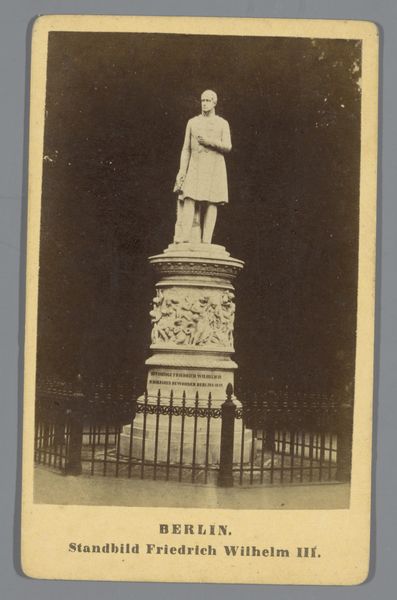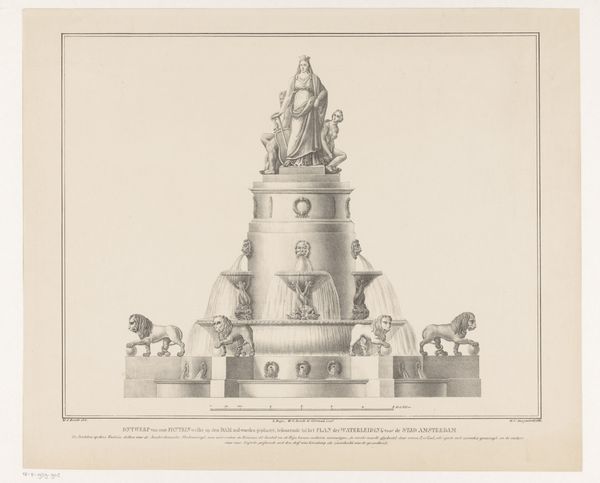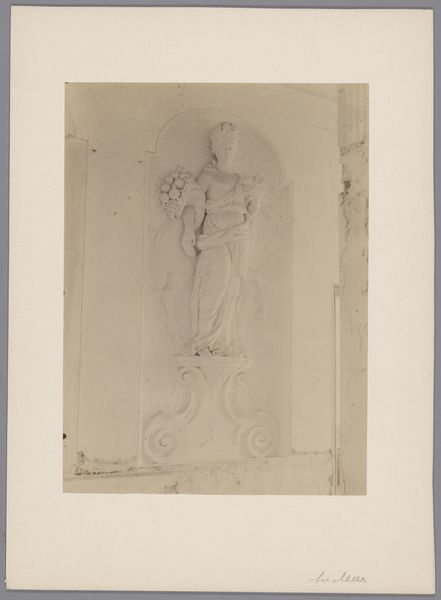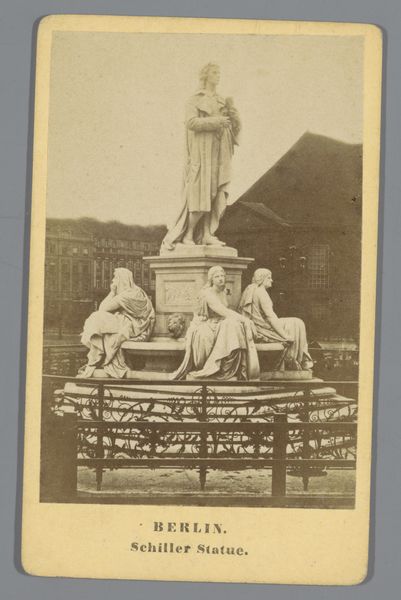
Gipsmodel (vermoedelijk) van het standbeeld van Catharina de Grote c. 1900 - 1930
0:00
0:00
Dimensions: height 150 mm, width 99 mm
Copyright: Rijks Museum: Open Domain
Curator: Here we have a photographic reproduction of a plaster model, likely a study, for a statue of Catherine the Great. The photograph itself probably dates from around 1900 to 1930. Editor: Immediately, I'm struck by the monumentality of the thing, even in miniature! The cascading tiers, the assertive gesture… it all seems very deliberate, almost imposing. But seeing it in this hazy, black and white photo gives it such an eerie ghost-like feeling. It feels caught between the worlds. Curator: Right. Knowing the time frame, we can consider it in terms of shifts in sculptural practice. Plaster models served a crucial role, mediating between the artist’s initial concept and the final bronze or marble work. There was also, with Neoclassicism and later academic sculpture, a deeply ingrained system of labour from studio to foundry that shaped this work's realization as much as the monarch it aimed to celebrate. Editor: Celebrating authority, of course. That arm outstretched—it's not exactly beckoning us closer, is it? More like laying claim, staking territory. Though, tell me, does she really need the little figures down below for support? Or maybe those historical or mythological allusions meant to buttress power by aligning her reign to... other worthy characters from history. I’d love to understand what the final, life-size bronze intended. Curator: Well, the final version certainly continued to communicate authority. These models are very rarely about the personal touch and much more about reproducing familiar, powerful and accessible, visual narratives of national triumph that spoke across Europe. And like everything else that relates to state production it was created and consumed. These were reproduced in popular press which extended and stabilized a network of consumer culture to cement such imagery even further into the modern world's field of vision. Editor: Fascinating to consider how these sculptures, these celebrations of power, filtered down, reproduced, and were eventually consumed. A powerful ruler indeed who commands respect across history. A compelling snapshot of a bygone era, yet so very much of our own moment, too.
Comments
No comments
Be the first to comment and join the conversation on the ultimate creative platform.

